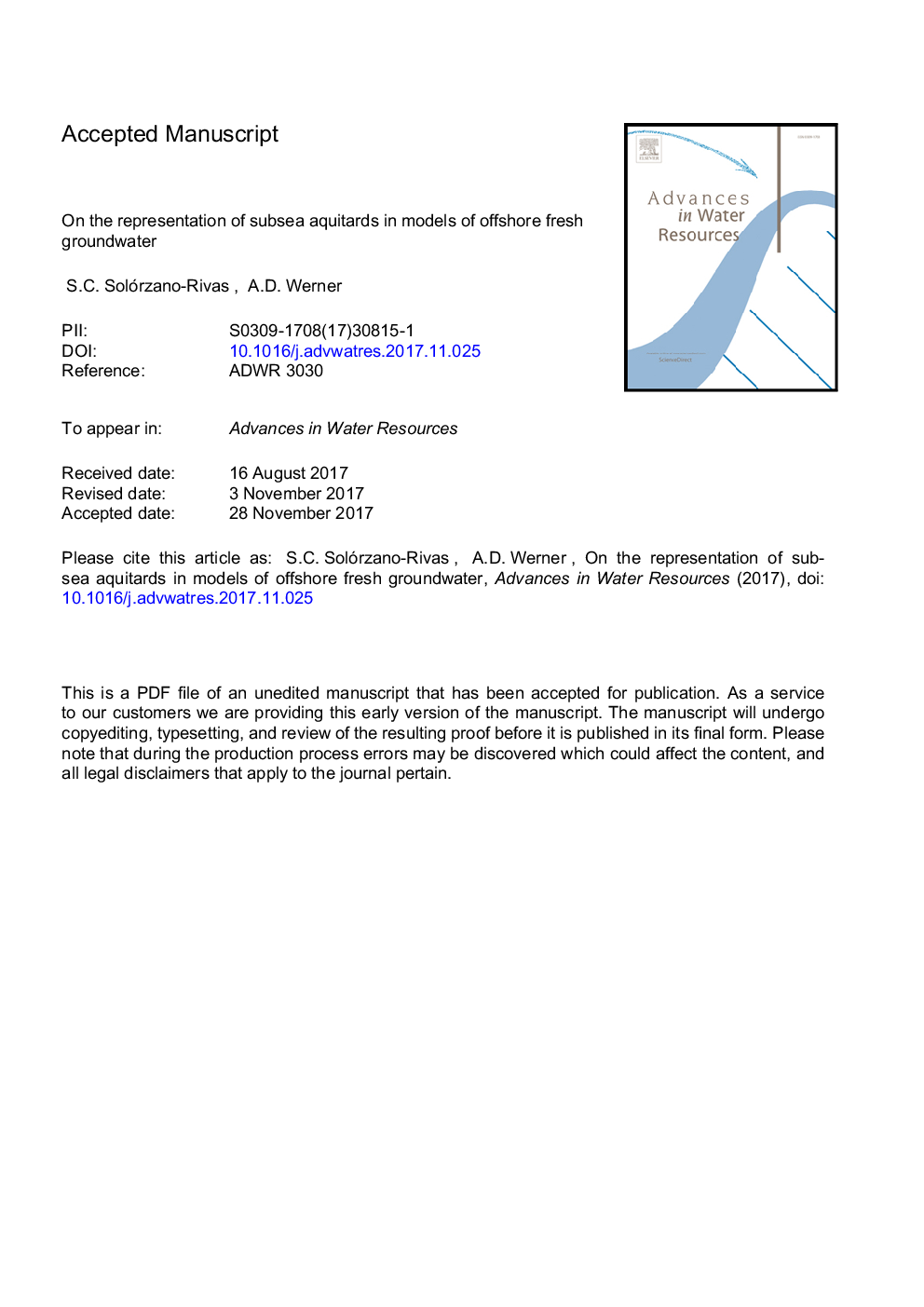| Article ID | Journal | Published Year | Pages | File Type |
|---|---|---|---|---|
| 8883390 | Advances in Water Resources | 2018 | 46 Pages |
Abstract
Fresh groundwater is widespread globally in offshore aquifers, and is particularly dependent on the properties of offshore aquitards, which inhibit seawater-freshwater mixing thereby allowing offshore freshwater to persist. However, little is known of the salinity distribution in subsea aquitards, especially in relation to the offshore freshwater distribution. This is critical for the application of recent analytical solutions to subsea freshwater extent given requisite assumptions about aquitard salinity. In this paper, we use numerical simulation to explore the extent of offshore freshwater in simplified situations of subsea aquifers and overlying aquitards, including in relation to the upward leakage of freshwater. The results show that available analytical solutions significantly overestimate the offshore extent of upwelling freshwater due to the presumption of seawater in the aquitard, whereas the seawater wedge toe is less sensitive to the assumed aquitard salinity. We also explore the use of implicit, conductance-based representations of the aquitard (i.e., using the popular SEAWAT code), and find that SEAWAT's implicit approach (i.e., GHB package) can represent the offshore distance of upwelling freshwater using a novel parameterization strategy. The results show that an estimate of the upward freshwater flow that is required to freshen the aquitard is associated with the dimensionless Rayleigh number, whereby the critical Rayleigh number that distinguishes fresh and saline regions (based on the position of the 0.5 isochlor) within the aquitard is approximately 2.
Keywords
Related Topics
Physical Sciences and Engineering
Earth and Planetary Sciences
Earth-Surface Processes
Authors
S.C. Solórzano-Rivas, A.D. Werner,
